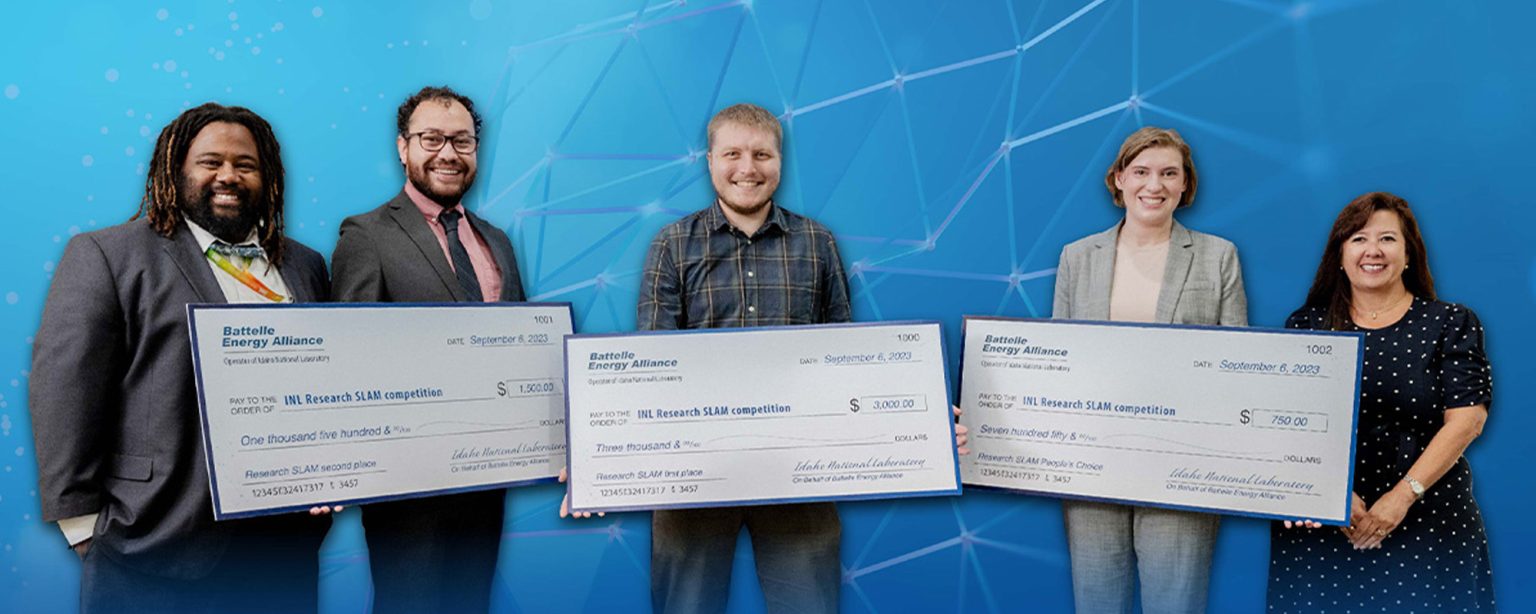Have you ever tried to explain intricate scientific research in a concise, three-minute presentation, making it accessible to a general audience?
It might sound easy, but it’s a real challenge for most scientists and engineers. How would an epitaxy physicist or systems integration engineer answer a local news reporter’s question: “What do you do at the lab?”
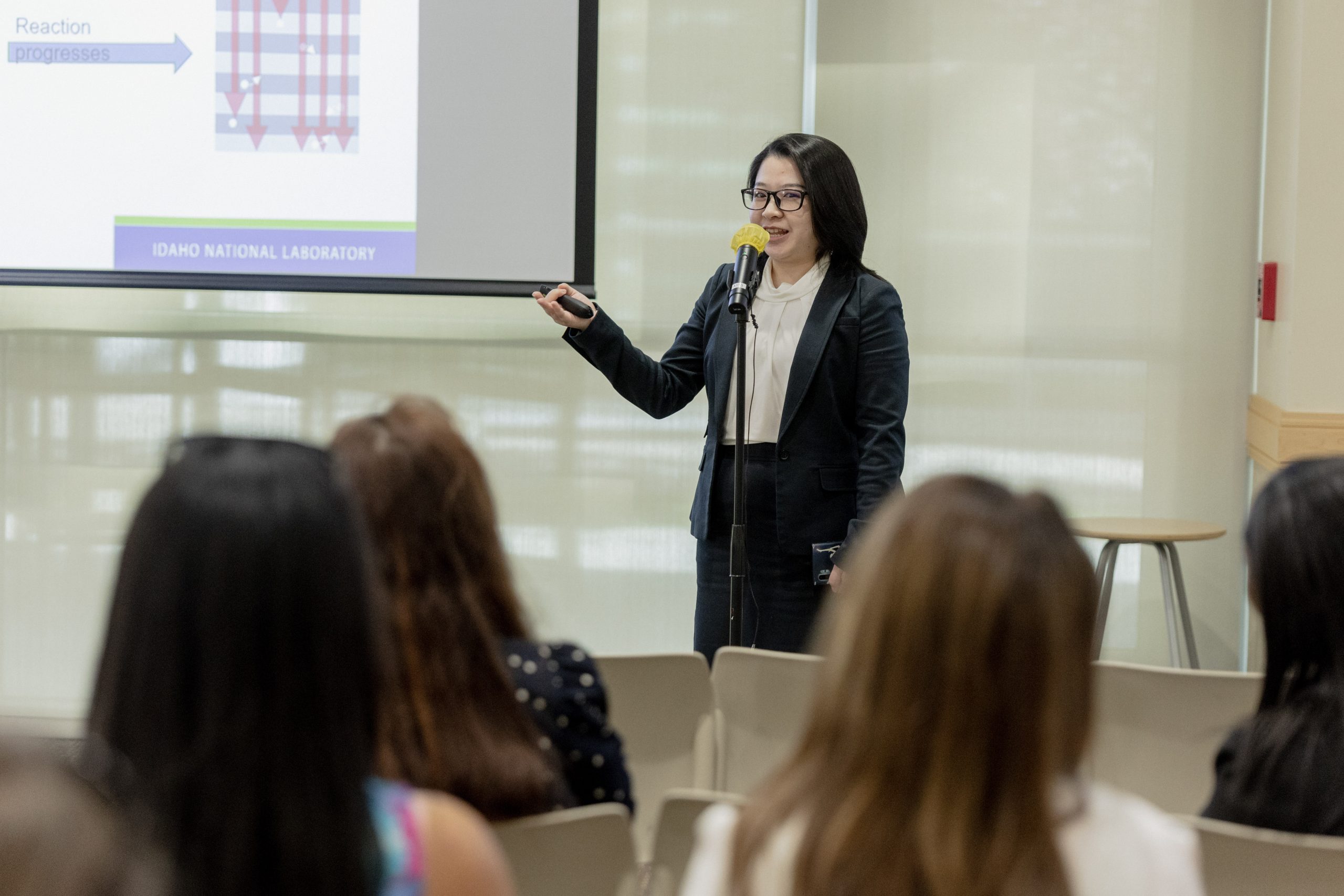
At Idaho National Laboratory, we strive to communicate our exceptional work to the public in language they can understand, helping gain support for our efforts to change the world’s energy future and secure our critical infrastructure. But for many, explaining these complexities is daunting.
On Sept. 6, the lab held its first SLAM research competition at the Energy Innovation Laboratory. The event was open to current employees who met one of two criteria: those holding a postdoctoral position within the current calendar year or those having received a doctorate within the past six years (since 2017).
What Is SLAM?
The SLAM is modeled after the Three Minute Thesis and Grad Slam events. The competition challenged contestants to present a compelling three-minute presentation of their research in a language appropriate to a general audience. Competitors were allowed one PowerPoint slide but no other resources or props.
The SLAM competition originated with the four California Department of Energy national labs and expanded this year to all 17 national labs. One of INL’s winners will represent the lab in Washington, D.C., in November alongside representatives from the other national laboratories.
A panel of four INL judges selected the first- and second-place winners, while the People’s Choice Award was determined by audience vote. The results reflect the impact of effective science communication, particularly with the general public.
Let’s meet the winners.
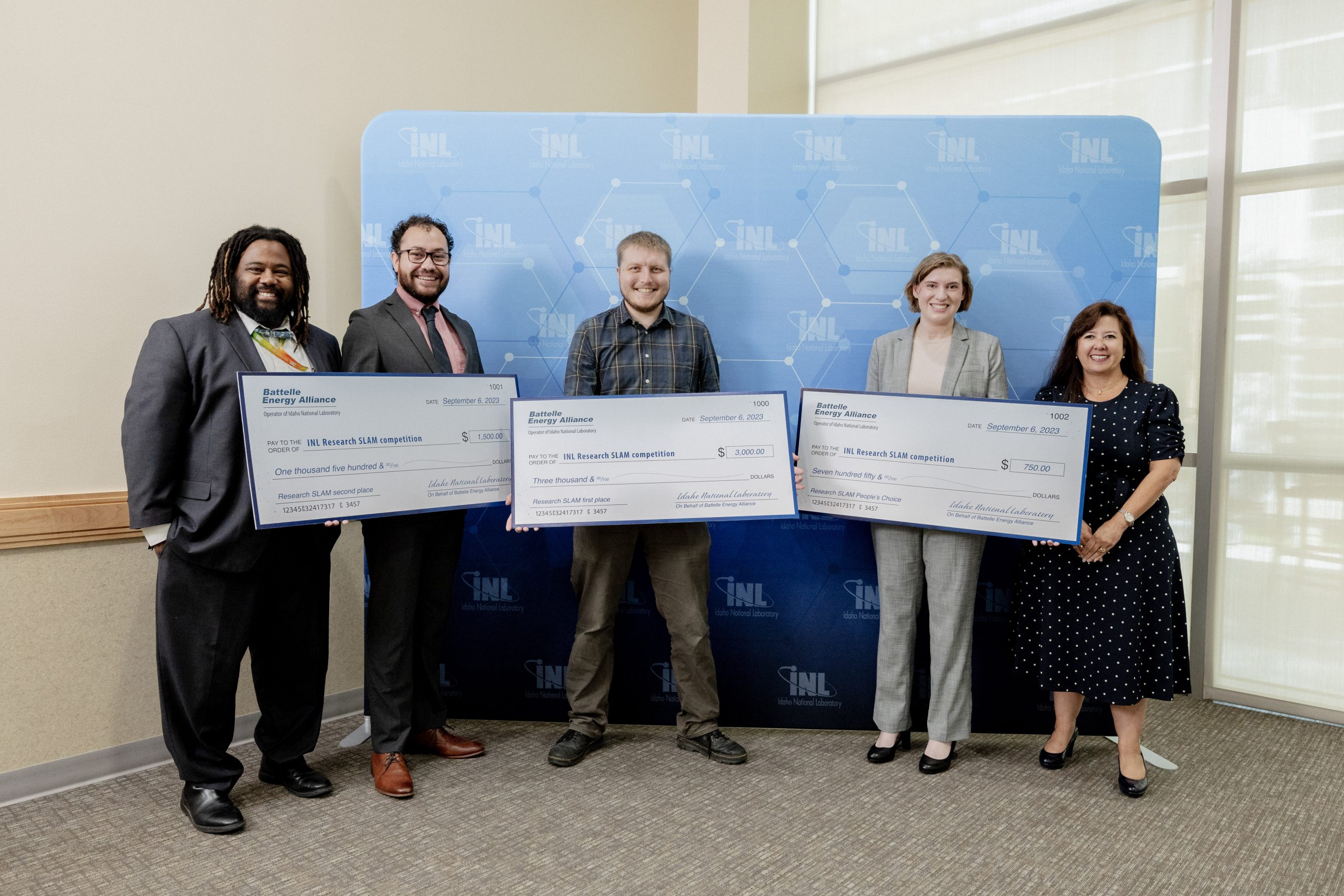
First place ($3,000) – Michael Moorehead, an advanced nuclear materials scientist in the Irradiated Fuels and Materials department, presented his research on parallelized electric field assisted sintering. Moorehead investigates and develops novel materials for nuclear applications with a focus on applying advanced manufacturing techniques, including additive manufacturing and electric field assisted sintering.
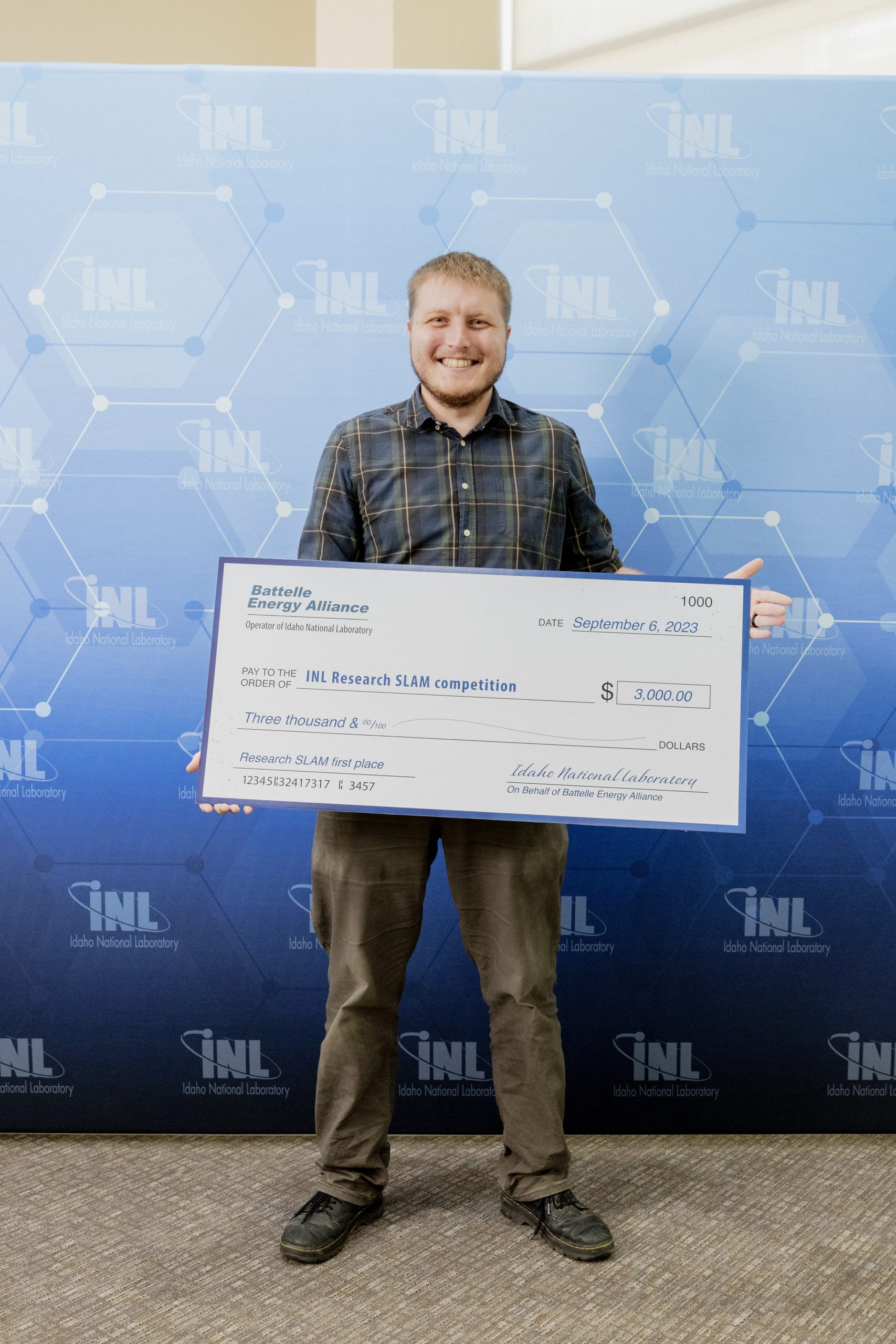
Second place ($1,500) – Kevin Vallejo, an epitaxy physicist and staff scientist in the Condensed Matter and Materials Physics department, discussed his research on stacking nuclear atoms for better physics and cleaner energy. As an epitaxy physicist, Vallejo uses physics to harness the molecular forces required to induce epitaxy, which is the ordering of atoms that create samples of various materials with very high quality.
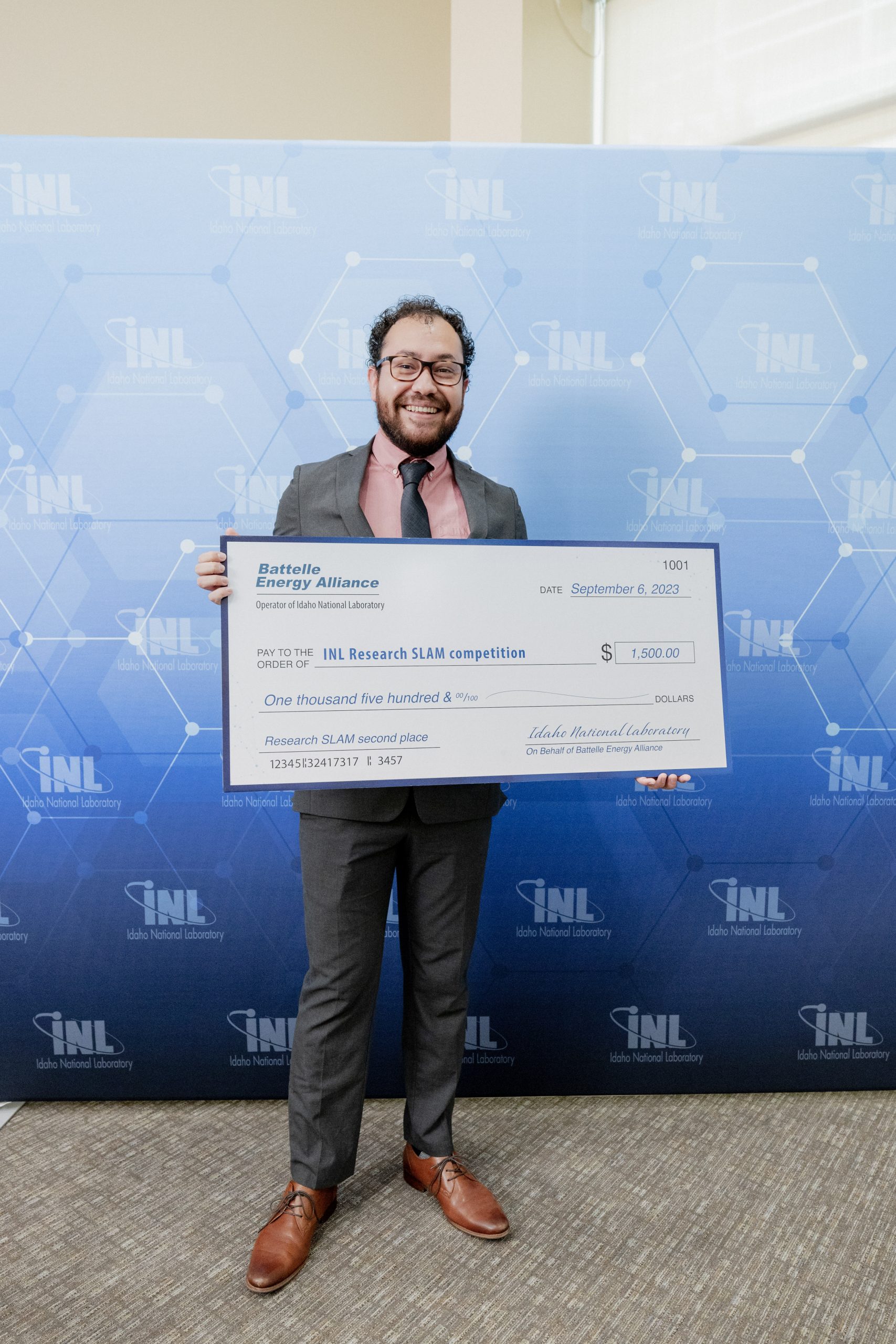
People’s Choice ($750) – Elizabeth Worsham, a systems integration engineer in the Integrated Energy and Market Analysis department, discussed how coal is not a dirty word. Worsham analyzes and optimizes integrated energy systems that involve producing, consuming, and storing heat, electricity and other commodities.
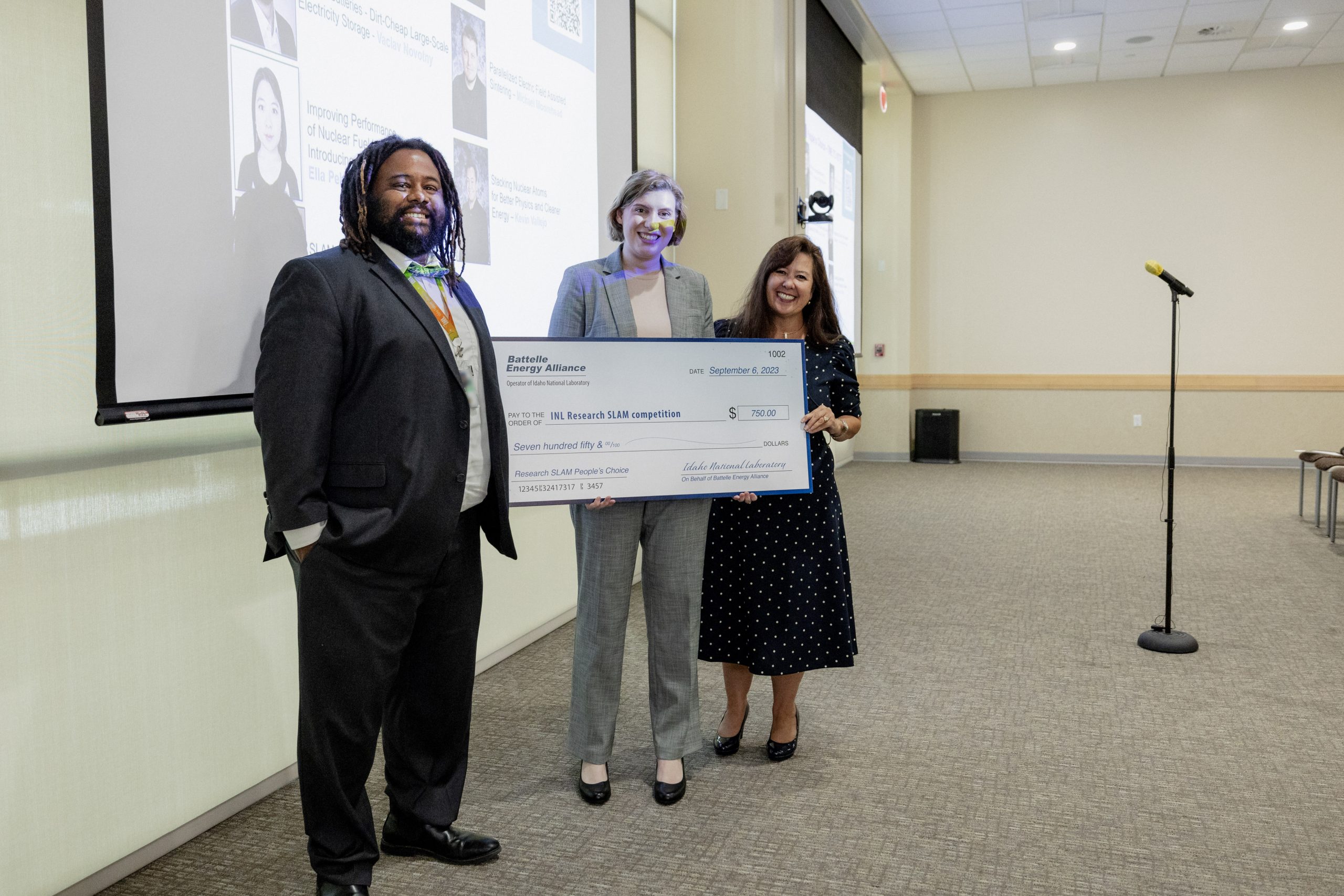
Learn more: National Lab Research SLAM

